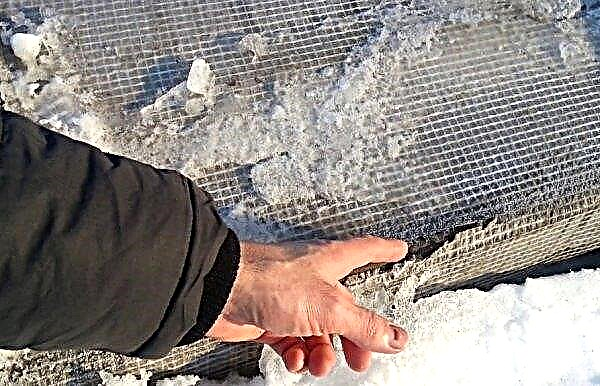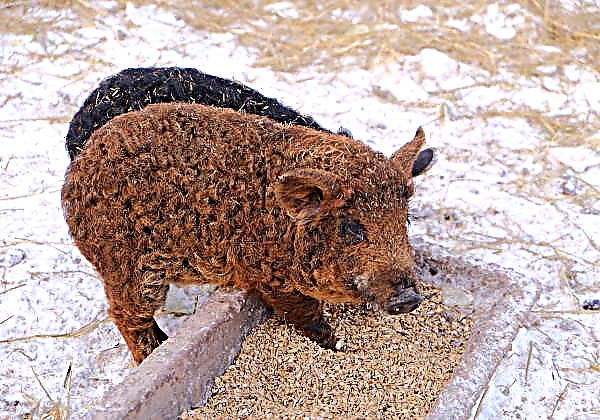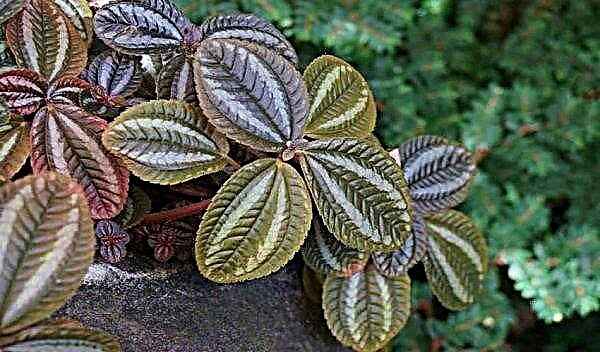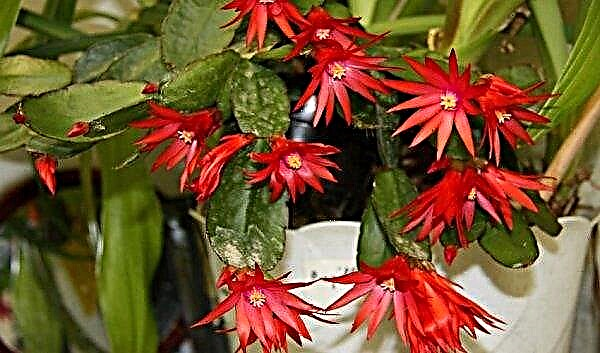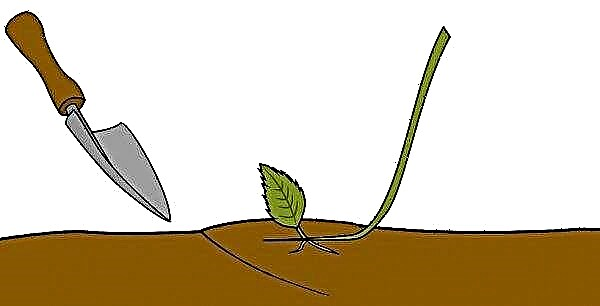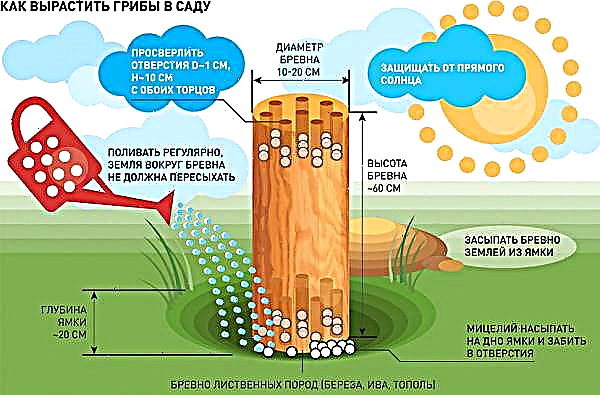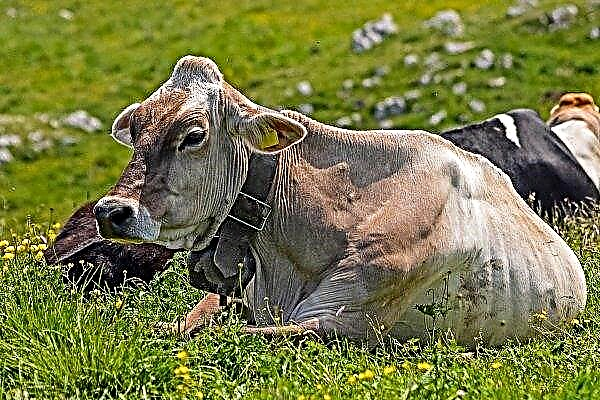Hospitable - a popular variety of salad tomatoes. It is known for its high taste and unpretentiousness to growing conditions. Let's take a closer look at the features of these tomatoes.
Grade description
Main characteristics:
- variety with medium early ripening - the crop can be harvested 115-120 days after germination of sprouts;
- bushes of the determinant type, with an average height of 80-100 cm;
- it is necessary to stepchild moderately (or not to stepchild at all);
- bush branched, massive, low, which is desirable to tie to the support;
- It is recommended to form a bush in 2 or 3 stems;
- the shape of the fruit is round, slightly flattened, slightly ribbed at the base;
- the average weight of a tomato is 300-350 g, in some cases it can be up to 1 kg;
- the peel is thin, strong, bright red;
- flesh is fleshy, tender, sugar;
- the tomato is resistant to temperature extremes, short-term lack of lighting;
- the yield is stable, high (according to the register - up to 8.3 kg per 1 m²);
- it is recommended to plant up to 6 bushes per 1 m².

Origin and application
The tomato variety Khlebosolny was bred by Siberian breeders Vladimir Dederko and Olga Postnikova. In 2006, it was entered in the state registry of the Russian Federation as a salad. The main distinguishing characteristics are unpretentiousness to weather conditions, good palatability of fruits and a high yield indicator.
Did you know? Foreign breeders bred a hybrid of tomato and potato: he grows tubers underground, and cherry tomatoes grow on the top. The resulting hybrid is called TomTato (tomato - tomato, potato - potato).
Advantages and disadvantages
- The main advantages of the variety:
- good storage and transportability;
- large tasty fruits;
- high productivity;
- unpretentiousness to weather conditions;
- the possibility of growing both in open and in closed ground;
- the presence of resistance to major diseases (cladosporiosis, fusariosis, tobacco mosaic virus).
Of the shortcomings, we can distinguish only that the bush is sprawling, so it must be tied up.
Features of growing tomatoes
Hospitable is quite unpretentious to the growing conditions, but still there are features that need to be taken into account.
Optimal conditions for growing
The Khlebosolny variety was created by breeders from Siberia for cultivation in risky farming areas, so it is able to tolerate temperature extremes and a temporary lack of moisture. The optimum temperature for planting a bush is +20 ... + 22 ° C. Watering the bush is recommended abundantly, approximately 1 time in 7 days. It is advisable that the water is warm and does not fall on the leaves of the plant.
Did you know? People suffering from insomnia are advised to drink a glass of tomato juice before bedtime. It contributes to a sound and healthy sleep.
Sowing seeds
You can grow tomatoes both from purchased seeds, and from your own. In order to get high-quality seeds at home, several fruits are left on the bush until fully ripened. After this, the fruits are plucked and placed on the window for several weeks. Overripe fruits are gently cut and seeds extracted from them. After that, they are washed in clean water and dried.
Before planting, the seeds must be germinated, for this they are placed in a damp cloth for several days. The soil before sowing is disinfected either by calcination in an oven, or moistened with a solution of potassium permanganate (potassium permanganate). Immediately before sowing, the soil is fertilized with humus. It is also recommended to add ash and superphosphate.
Sowing must be carried out as follows:
- Immerse germinated seeds in the ground by 1.5–2 cm.
- Moisten the soil from the spray bottle.
- Cover with foil.
- Put in a warm room (temperature about +25 ° C).
- Sprinkle with warm water from the spray gun. Ventilate.
- After the emergence of seedlings (seeds must germinate for 7 days) remove the film and lower the air temperature to +15 ° C.
Seedling Care
A week after the appearance of the first sprouts, the temperature in the room where the seedlings are located should be +20 ... + 22 ° С. A container with seedlings must be put on the windowsill. If sunlight is not enough, it is recommended to hang a fluorescent lamp over the sprouts. After the appearance of 1-2 true leaves, the sprouts need to be planted in separate containers, the volume of which should be at least 500 ml.
Important! For a good yield, tomatoes need to be planted every year in a new place. Tomatoes grow well in the garden, where there used to be carrots, cabbage, legumes or cucumbers.
Before planting seedlings, it is necessary to harden it. To do this, she is daily taken out into the street in the shade for two weeks. The time spent in the air is gradually increased, starting from 30 minutes. Immediately one day before transplanting, the seedlings should be constantly in fresh air.
Planting seedlings in open ground
A plant is considered ready for planting in open ground, if at least 6 leaves have formed on it (preferably 8–10), at least one inflorescence has formed and its height reaches 25–30 cm. Planting is carried out when the land has warmed up, approximately from the middle May to mid-June. It is optimal to plant plants in the morning or in the evening so that there is no sunshine, and it is better that there is no strong wind.
Landing is as follows:
- Dig holes 10-15 cm deep in the ground.
- The distance between the holes in the row should be 30 cm, and between the rows - 50 cm.
- Pour the bottom of the hole with a weak solution of potassium permanganate for disinfection and add 1 tsp. mineral fertilizers (preferably).
- Put a sprout in the holes together with the ground, which is located on its root.
- Empty the voids with dry, loose soil.
- Water the planted plants with warm water.

Care Features
In order for the productivity of the Khlebosolny tomato variety to be high, it is necessary to ensure proper care for the plants. Consider the features of caring for these tomatoes.
Watering and feeding
Despite the fact that the plant is able to tolerate short-term drought, it needs watering. Watering should be plentiful, but not often, once a week is enough. Water should be warm, better settled. When watering, it is important not to wet the leaves. During the formation of fruits, the volume of water must be increased.
After moistening the soil, it can be fertilized. It is best to use a combination of mineral and organic fertilizers. Initially, manure and ash are used (added to water), and then sodium and nitrogen fertilizers are used. In this case, you must be careful: an excess of phosphorus, sodium and other substances can harm the plant.
Soil cultivation and weeding
Tomatoes grow better on loose soil. After each irrigation or rain, the soil is loosened so that air enters the root system. In the first 3 weeks after planting, they are loosened to a depth of 12 cm, then - up to 5–8 cm in order to avoid damage to the roots. Simultaneously with loosening the soil, weeds are destroyed. They adversely affect the growth and yield of tomatoes, so weeding must be carried out regularly.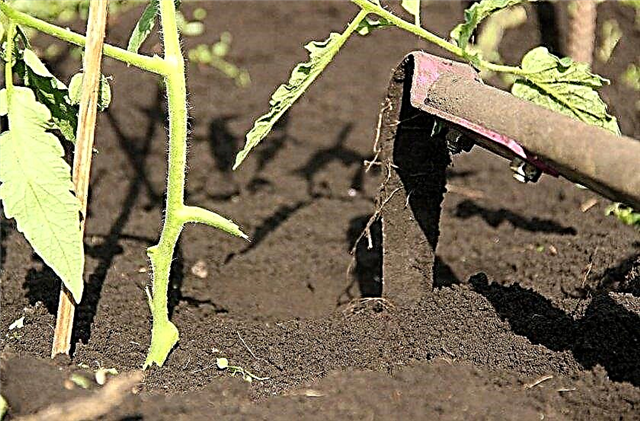
Shrub formation and pinching
The Khlebosolny variety can be grown without stepson and at the same time get a good result. To obtain large fruits, it is recommended to form a plant in 2 stems, that is, leave 2 stepson above and below the first flower brush, remove the rest. The bush of such a tomato is sprawling, and the fruits are large, so it must be tied to a support.
Diseases and pests
Tomato Hospitable has a high immunity to diseases, but nevertheless preventive measures are necessary to avoid diseases. To protect against fungal diseases during the growth period of tomatoes, they are treated with fungicidal preparations. To protect against damage by scoops, you can use tank mixtures (a mix of insecticides and fungicides). Preventive methods for protecting against diseases are also cleaning the soil before planting from perennial weeds and digging the soil to a depth of at least 25 cm (to freeze the soil and destroy spores and larvae).
Preventive methods for protecting against diseases are also cleaning the soil before planting from perennial weeds and digging the soil to a depth of at least 25 cm (to freeze the soil and destroy spores and larvae).
Harvesting and storage
Harvesting is carried out 115-120 days after planting. It is advisable to harvest tomatoes at a time when there is no dew. If there is a threat of cooling to +5 ° C, it is necessary to collect all poured fruits and leave them to ripen.
For storage, specimens are selected that do not have visible skin lesions that are not wrinkled. Storage is possible in a darkened room at a temperature of at least +5 ° C. You can use wooden crates, cardboard boxes or plastic crates with a paper covered bottom.
Important! 2 weeks before the ripening of tomatoes, it is necessary to stop any spraying of the bushes with chemicals.
Tomatoes of the Khlebosolny variety will delight gardeners with their large and tasty fruits, as well as resistance to various weather conditions. If you follow all of the above recommendations in caring for these tomatoes, then getting a good harvest will not be difficult even for a novice gardener.

